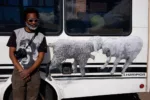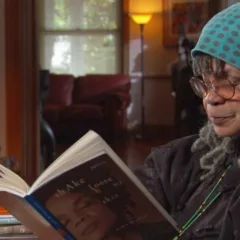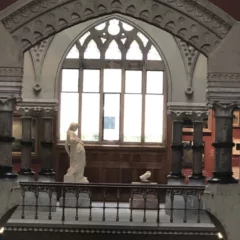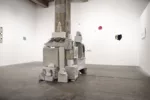This week’s Weekly has my interview with PAFA Curator of Contemporary Art, Julien Robson.
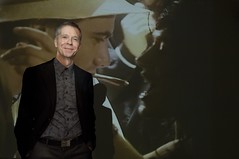
Meet Julien Robson, a curator who started out as an artist getting his fingers dirty in the studio. The Scottish-born Robson, the Pennsylvania Academy for Fine Art (PAFA)’s new curator of contemporary art, earned the British equivalent of an M.F.A. from University College London. While he characterizes his own early art with a dose of good-natured self-deprecation (“constructivist paintings … I was drawing squares”), what’s important is that he brings an artist’s mentality to curating collections.
Robson, 53, is a take-charge guy with a steady gaze. In his previous role as contemporary curator at the Speed Art Museum in Louisville, Ky., the last eight years, he helped the institution raise $75,000 a year to acquire world-class contemporary art including, he points out, the first and only Yinka Shonibare installation in the Midwest.
He also organized several edgy and wildly successful projects in Louisville and found ways to support and empower young artists and create buzz about the scene. Louisville will never be New York, but the sleepy Southern college town—a great family town, says Robson—now has an art boutique hotel with a 9,000-square-foot contemporary art museum and Gallery NuLu, the inevitable result of a transplanted New Yorker capitalizing on the bustling young art scene.
If Robson can operate outside the traditional PAFA box, the organization could take on a new role in the city’s art scene. Robson’s interested in community building, and he might just be the contemporary art leader people have been hoping for at this time of great excitement but little or no institutional support.
Here’s an excerpt from our recent interview.
Tell me more about yourself.
“I was born in Scotland and moved around a lot. The longest I lived in a big city was Vienna. My wife, Anita Scharrer, is Austrian. We’ve been together since 1988 and got married in 1999 when I was at the Santa Barbara Museum. She’s a clothes designer—it’s very word-of-mouth. I was her guinea pig when she was in school. She’s made me a couple of coats but she doesn’t like to make men’s clothes.”
When you bought art for the Speed Museum, did you go to the art fairs?
“I don’t like the art fairs. They’re a zoo. I went with the museum’s collector’s group to New York and spent time in the galleries. We spent one and a half hours with Los Carpentieros so I could talk with the collectors about craftsmanship.
You said you bought the Yinka Shonibare before the price shot up. Do you follow the prices of art in the marketplace?
“That’s part of the curator’s job—to stay on top of prices.”
What’s your role at PAFA?
“I just got here [in July] and have been having discussions with director David Brigham and with Bob Cozzolino [curator of modern art] about how you change the nature of engagement in a museum. These are the kinds of discussions that attracted me here … David and Bob and I can kick ideas around with energy, enthusiasm and humor. PAFA has a niche. We have to define what that is. We need to bring back to life the revolutionary aspect of this institution. Every revolution has to be followed by another. It’ll be interesting to be part of that. I’m not an Americanist, but then look at the Whitney Biennial. It’s global. We’re in a global situation.”
Will you have a budget to buy art?
“There’s a lot of deacquisitioning going on. This is an institution missing the second half of the 20th century. We can’t buy it now. We have to develop a relationship to collectors who can help us tell the story.”
What’s the first show you’re doing?
“The Sidney Goodman show. I inherited it. But I want to do something different than what we normally do.”
How about the Morris Gallery?
“Alex [Baker, former curator of contemporary art] is a hard act to follow. Morris Gallery kicks off in January. We have to do it without funds, but I’m good with cheap.”


